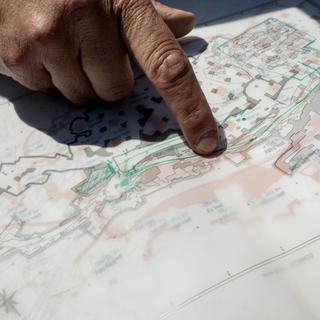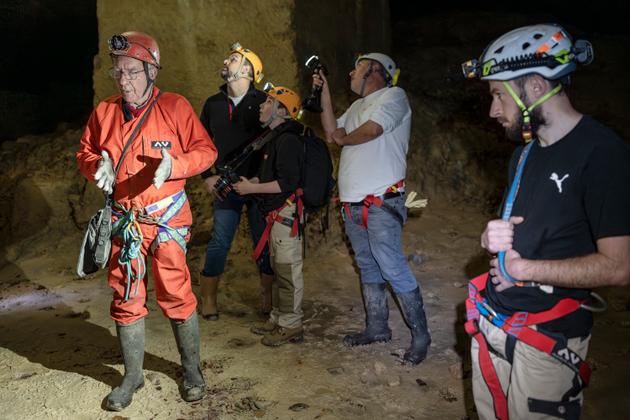


In an underground quarry in Normandy, archeologists trace the people who hid from D-Day bombings
FeatureDuring the Allied bombings from June 6 to late July 1944, hundreds of Caen residents took refuge in the Saingt quarry. Now abandoned and largely intact, it is a playground for archeologists, who have turned it into a conservation space and a laboratory for their methods.

It was a dive into the ground and into the past. Archeologists Cyril Marcigny from the French National Institute for Preventive Archeological Research (INRAP) and Laurent Dujardin from the Center for Archeological and Historical Research invited us on a fascinating journey back in time, which they themselves only undertake every five years. We were somewhere in a residential development in Fleury-sur-Orne, just south of Caen, in Normandy. There was a well with a ladder poking out. We slid down around a dozen meters, equipped with a harness and supported by members of the Hérouville caving team.
At the bottom was darkness and mud. You could hear the patter of water droplets, remnants of winter rains, trickling through the stone ceiling. An underground labyrinth in a two-hectare quarry where, from June 6, 1944 onward, hundreds of Caen residents took refuge from the Allied bombing raids that accompanied the D-Day landings. For almost two months, this quarry, which was no longer mined for its white limestone and served as a storage site for the Saingt brewery, was their shelter, their ordeal and their salvation. That is, until their hasty evacuation at the end of July 1944, when they left behind the remnants of their presence – some of their belongings and their litter. Abandoned immediately after the liberation of France, the Saingt quarry has remained virtually undisturbed. Their memory of the event has become fixed in the ground, a paradise for archeologists who have turned it into a conservation space and a laboratory for their methods.
We had to walk in single file, carefully avoiding all the "occupancy units," rectangular spaces attached to the walls where the families settled eight decades ago. Reinforcing iron rods poked out here and there – they "were put in by the refugees to delimit their living space or to support wooden steps, most of which have disappeared. The most flattened spots are where they slept, on straw," said the archeologists. One of the last living witnesses, Yvette Lethimonnier, told the researchers that "her worst memory was when she and her family went to bed and their feet touched the feet of the family next door," said Marcigny.

Acetylene lamps
"Very quickly," he added, "an internal organization was set up, for supplies and cooking, which could only be done outside." Off to the side, in this underground quarry, were latrines and a butchery area. The refugees, who numbered up to a thousand, were able to drink the water from the brewery's well and its beer bottles. Plenty of empty bottles and porcelain stoppers were found.
You have 62% of this article left to read. The rest is for subscribers only.
